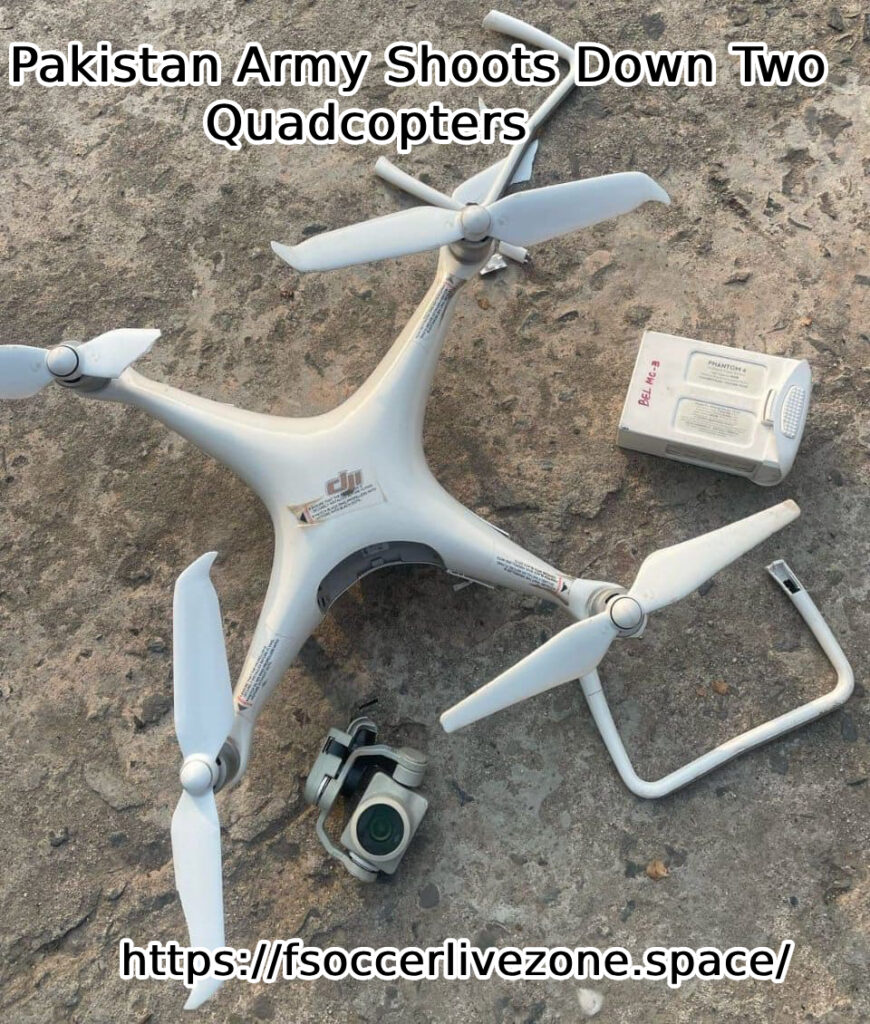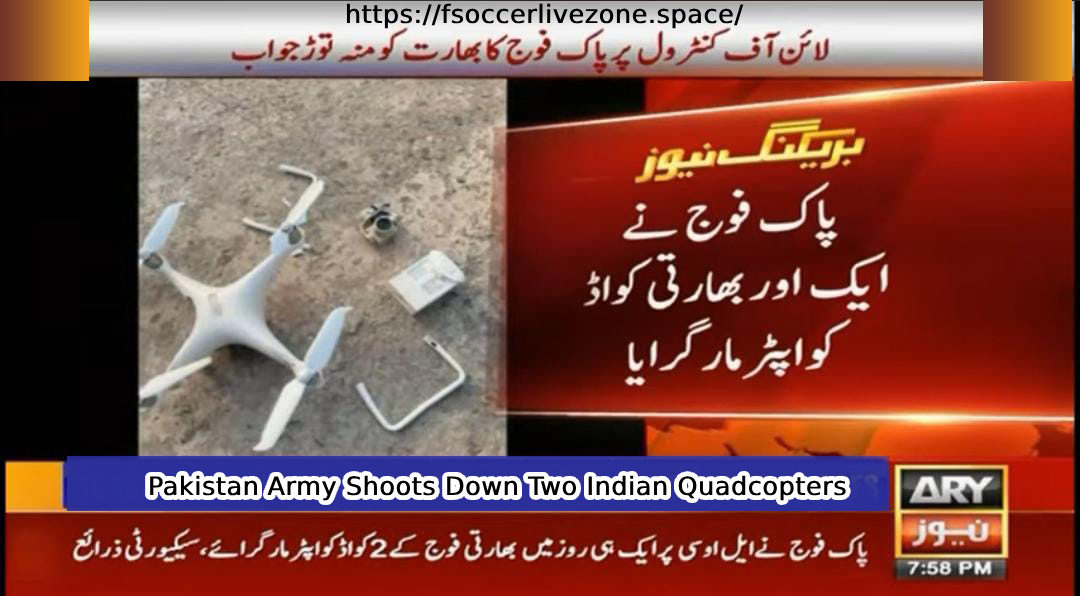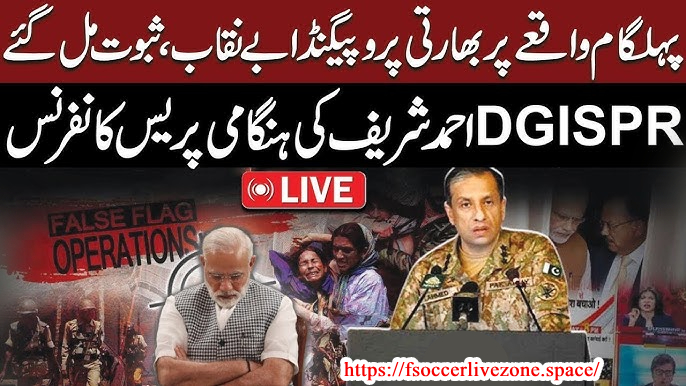The Pakistan Army shot down two Indian Quadcopters near the Line of Control for violating airspace, escalating tensions with India following a deadly attack in Kashmir
Islamabad, April 30, 2025 – In a significant escalation of tensions along the Line of Control (LoC), the Pakistan Army has reportedly shot down two Indian surveillance quadcopters for violating Pakistan’s airspace. The incidents come at a time of rising hostilities between the two nuclear-armed neighbors, further deepening the geopolitical rift in South Asia.
Details of the Drone Shootdowns
According to official military statements, the first Quadcopters was downed in the Manawar sector near Bhimber, Azad Jammu and Kashmir. The second drone was intercepted shortly after in the Satwal sector of Rawalakot. Both drones, believed to be part of India’s surveillance strategy, were allegedly attempting to gather intelligence on Pakistan’s border deployments.
Eyewitnesses in the area confirmed hearing gunfire, followed by a sharp buzz as the drone fell to the ground. Security personnel quickly secured the wreckage, which is now under examination by Pakistan’s defense intelligence for forensic analysis.
Why These Incidents Matter
This is not the first time such aerial incursions have occurred. Over the past few years, multiple quadcopters from across the border have been shot down. However, the timing of this recent provocation has raised eyebrows due to its proximity to an already sensitive regional development — the recent attack in Indian-administered Kashmir’s Pahalgam region that killed over two dozen individuals.
India blames Pakistan-based militant outfits for the attack, a claim Islamabad has categorically rejected. This backdrop has added fuel to the fire, making the Quadcopters drone shootdowns more than just an isolated military response—they have become a symbol of national sovereignty and resistance.
Military and Political Response
Pakistan’s Ministry of Defence confirmed the engagements, reiterating the military’s commitment to protecting the country’s territorial integrity. Defense Minister Khawaja Asif stated that any incursion, regardless of size or purpose, would be met with “an uncompromising military response.”
Chief of Army Staff General Asim Munir held a high-level meeting shortly after the incidents, emphasizing combat readiness and urging vigilance along the LoC. Intelligence reports had already warned of increased aerial activity from the Indian side, and these warnings have now been vindicated.
The defense minister also suggested that India might be orchestrating provocations to divert attention from domestic unrest or upcoming political shifts, a tactic often used in high-stress electoral periods.
Diplomatic Repercussions
The Pakistani Foreign Office has formally lodged a protest with the Indian High Commission, labeling the Quadcopters drone activity a “clear violation of international norms and bilateral agreements.” In response, India has remained tight-lipped, with no official statement released as of this writing.
This new episode is expected to strain diplomatic ties further. Experts believe this could lead to suspension or reconsideration of any existing confidence-building measures between the two nations. Both countries had agreed in 2021 to observe a ceasefire along the LoC, but that agreement now appears increasingly fragile.

Regional Implications and Global Concerns
The international community is keeping a close watch. Any military escalation between India and Pakistan carries regional and global implications, especially given their nuclear capabilities. The United Nations and key world powers have previously called for restraint and dialogue, but recurring incidents like these threaten to derail even the most basic diplomatic engagements.
The Quadcopters incursions are also a reminder of the increasingly technological nature of modern warfare. While drones provide real-time surveillance and strategic advantages, their misuse or unauthorized deployment across borders can quickly ignite major conflicts.
Public Sentiment and Media Coverage
The Pakistani public and media have responded with a mix of anger and pride. Social media platforms have been flooded with hashtags celebrating the military’s response, while national news channels highlight the readiness and vigilance of border forces.
In contrast, some commentators have called for transparency and caution, warning against overreaction that could inadvertently escalate into a larger conflict. Nonetheless, the overwhelming national narrative supports the army’s swift and firm action.
Conclusion
The downing of two Indian quadcopters by the Pakistan Army is more than just a tactical success; it reflects the rising tensions between two nations with a history of conflict and mistrust. As political and military narratives harden on both sides, the need for open communication and de-escalation becomes more critical than ever.
Both India and Pakistan must now decide whether to continue on this confrontational path or step back and seek diplomatic solutions. The region—and the world—will be watching





